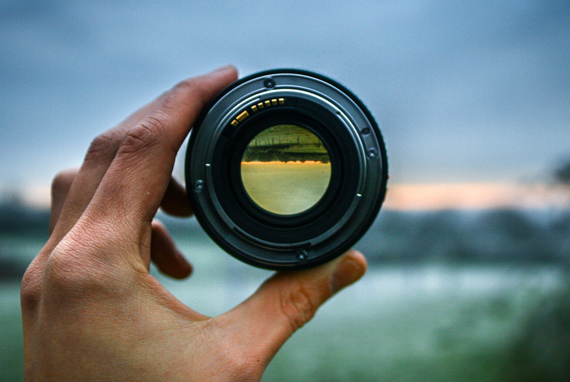One of the main benefits of owning a DSLR camera is the ability to utilize a wide variety of different lenses. Most professional photographers will tell you that the camera itself — as long as it has all basic DSLR functionality and records images to the memory card in a high resolution file — is not as important as the lens (or glass) that you choose to use. There are several basic categories that lenses fall under. Understanding the categories is the first step towards knowing which lens is the right one for you.
Kit Lenses
Kit lenses are offered for purchase along with the camera body, but you will often have the option to purchase the camera body without the kits lens. These lenses provide very basic functionality for everyday shooting at an inexpensive price and are therefore a good choice for beginners.
Prime Lenses
Prime lenses offer only one focal length, which is a feature that’s becoming less and less popular with DSLR lenses. If you’re doing specialized shooting, though, prime lenses are a very good option, as they typically have wider apertures than other lenses.
Zoom (Telephoto) Lenses
Zoom lenses are easily the most popular lens choice because they allow for a lot of variation in the focal point of the photograph. A 70-300mm lens, for example, can be used in the 70-105mm range for portraits and other close-up photographs, while the other end of the spectrum is useful for capturing images of wildlife and other objects that are located far away from the camera. Higher-end zoom lenses handle both aspects very well, but although you gain in ease of functionality, you do typically lose a bit of sharpness.
Wide Angle Lenses
Wide angle lenses are the preferred choice for landscape and architecture photographers. They allow for a much broader scope to be captured in a single image.

“New York City from Central Park on a Cold, Foggy Night” captured by Hector Parayuelos using a wide-angle lens
Macro Lenses
Macro lenses allow you to take an in-focus photo at an incredibly close range. They are most commonly used by photographers who are shooting flowers, insects, and raindrops.
Specialty Lenses
There are a wide variety of specialty (or trick) lenses available. The most popular of which is probably the fisheye lens, which gives a slightly distorted and circular feel to the images.
How to Choose a Lens
So how do you choose from the options listed above? There are five main things to consider:
- What exactly are you planning to photograph?
- What is your price range?
- Which lenses in the appropriate category are compatible with your camera?
- What is your preference for hardness versus softness in your photographs? Be sure to read reviews of the lenses you’re looking at to see how they rate in these categories.
- Does the lens have a wide enough aperture for the lighting conditions you’re planning to shoot in?
Now that you have a basic understanding of the many different types of lenses that exist, answering these five questions should allow you to narrow the wide field of available lens options to the one that is most suitable for you. Happy shooting!
About the Author:
This article was written by Jamie Simpson, find out more about Digital SLR Cameras from Sony.
Like This Article?
Don't Miss The Next One!
Join over 100,000 photographers of all experience levels who receive our free photography tips and articles to stay current:










Leave a Reply